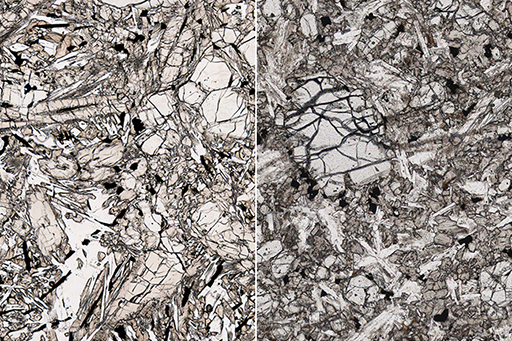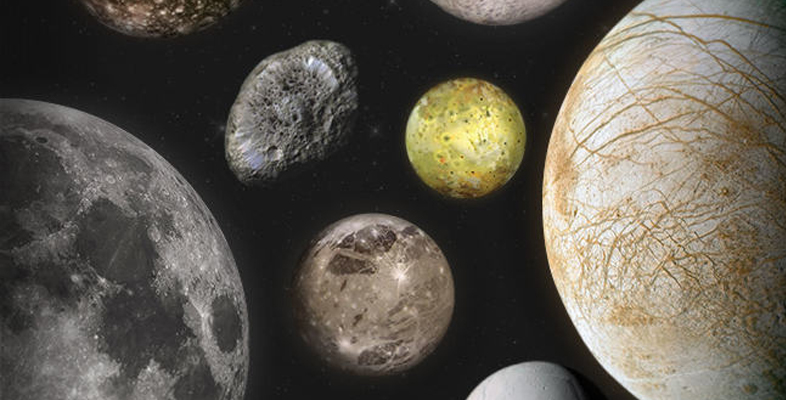1.1 Dry rocks
When samples were first brought back from the Apollo 11 mission, they appeared to show pristine basalts, as fresh as the newly erupted basalts being created on the volcanic island of Hawaii. As the rocks were curated and given to scientists to analyse, the analysis appeared to corroborate the completely dry nature of the samples.

These images show a 3000 million-year-old lunar mare basalt (NASA sample 12002) (left) and a 335 million-year-old terrestrial basalt from Scotland (right). ). Although the terrestrial basalt is one tenth of the age of the lunar basalt it has patches of rust throughout, following fractures and cavities. The mare basalt collected by Apollo 12 astronauts is completely clean, despite being over 3 billion years old. It has not been subjected to interaction with water.
The Full analysis of lunar and terrestrial basalt PDF [Tip: hold Ctrl and click a link to open it in a new tab. (Hide tip)] gives you a table of data that shows the composition of two basalt samples, analysed using sophisticated X-ray fluorescence spectrometry in laboratories on Earth. The totals lie close to 100%, although not exactly, because there are small errors in the analysis of each element, shown as its oxide. Both the analyses totals shown here are sufficiently close to 100 to be considered ‘good’ analyses.
Note that the analysis of the picritic basalt (an eruption in India with a similar composition to the Mare basalts) does contain a small amount of water and this is not all related to later weathering by Indian rain. Fresh Earth basalts contain water in small amounts, not just from interaction with the atmosphere and oceans, but they also contain water from the magma source where the magma was generated and can often contain some hydrous minerals such as biotite or amphibole. The Earth’s mantle contains low concentrations of many volatiles (substances that are easily vaporised) including H2O, CO2, CH4, SO2, and halogens such as Cl2.
